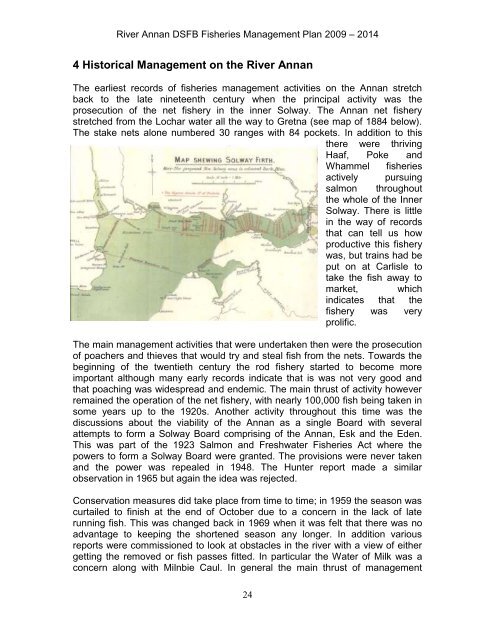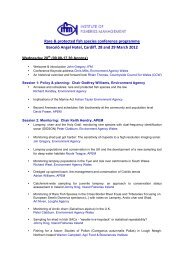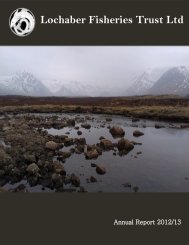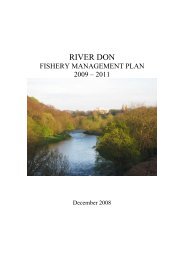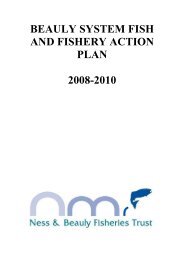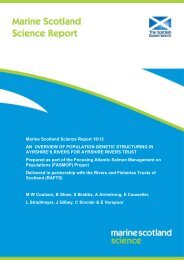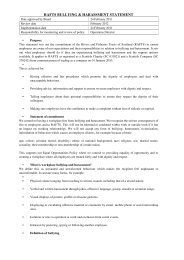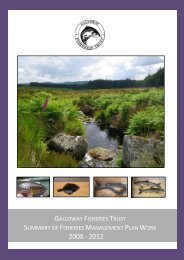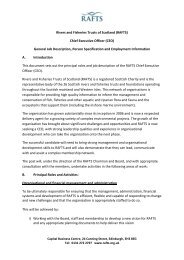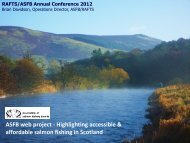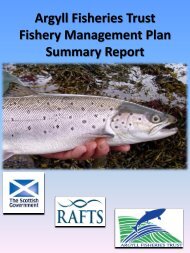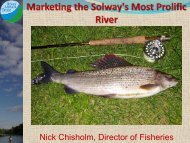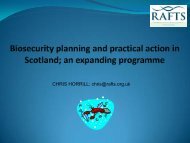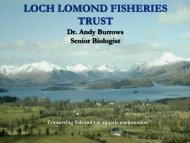Create successful ePaper yourself
Turn your PDF publications into a flip-book with our unique Google optimized e-Paper software.
River <strong>Annan</strong> DSFB Fisheries <strong>Management</strong> <strong>Plan</strong> 2009 – 20144 Historical <strong>Management</strong> on the River <strong>Annan</strong>The earliest records of fisheries management activities on the <strong>Annan</strong> stretchback to the late nineteenth century when the principal activity was theprosecution of the net fishery in the inner Solway. The <strong>Annan</strong> net fisherystretched from the Lochar water all the way to Gretna (see map of 1884 below).The stake nets alone numbered 30 ranges with 84 pockets. In addition to thisthere were thrivingHaaf, Poke andWhammel fisheriesactively pursuingsalmon throughoutthe whole of the InnerSolway. There is littlein the way of recordsthat can tell us howproductive this fisherywas, but trains had beput on at Carlisle totake the fish away tomarket, whichindicates that thefishery was veryprolific.The main management activities that were undertaken then were the prosecutionof poachers and thieves that would try and steal fish from the nets. Towards thebeginning of the twentieth century the rod fishery started to become moreimportant although many early records indicate that is was not very good andthat poaching was widespread and endemic. The main thrust of activity howeverremained the operation of the net fishery, with nearly 100,000 fish being taken insome years up to the 1920s. Another activity throughout this time was thediscussions about the viability of the <strong>Annan</strong> as a single Board with severalattempts to form a Solway Board comprising of the <strong>Annan</strong>, Esk and the Eden.This was part of the 1923 Salmon and Freshwater Fisheries Act where thepowers to form a Solway Board were granted. The provisions were never takenand the power was repealed in 1948. The Hunter report made a similarobservation in 1965 but again the idea was rejected.Conservation measures did take place from time to time; in 1959 the season wascurtailed to finish at the end of October due to a concern in the lack of laterunning fish. This was changed back in 1969 when it was felt that there was noadvantage to keeping the shortened season any longer. In addition variousreports were commissioned to look at obstacles in the river with a view of eithergetting the removed or fish passes fitted. In particular the Water of Milk was aconcern along with Milnbie Caul. In general the main thrust of management24


